Navigating the World Scout Jamboree in South Korea : A lesson in emergency preparedness and resilience
Our Toronto program manager, Sean Hume, was one of 5,000 volunteers working at the 25th World Scout Jamboree in South Korea in August 2023, helping to guide Canadian Scouts through the highly anticipated gathering that takes place every four years. Upon his return from this once-in-a-lifetime adventure, Sean told us about his experience and what he learned about planning and emergency preparedness along the way:
“Our lives are full of connections and networks. I’ve always been mindful of where I can cross these connections to enhance and strengthen the impact of my efforts. In that sense, many people and places, goals and approaches, opportunities and lessons intersect in my professional life at Outward Bound Canada (OBC) and in my personal volunteer work with Scouts Canada. This was also the case at the 25th World Scout Jamboree, in SaeManGeum, South Korea – an event that taught me a lot about emergency preparedness and resilience – two important aspects of everything we do here at OBC.
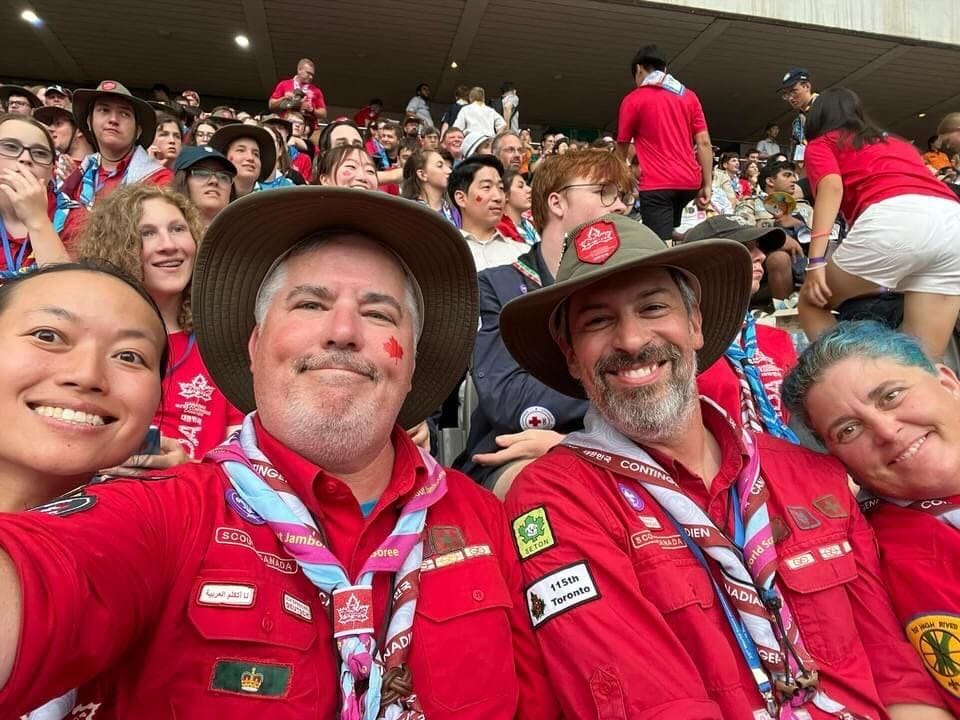
“How was the Jamboree?”
I’ve been back for a couple of weeks, but I still don’t know how to answer that question.
The Jamboree takes place every four years and brings together nearly 50,000 youth from more than 170 countries for a 12-day camping adventure with the largest youth organization in the world. That’s truly an impressive logistical feat, but this year’s jamboree in South Korea was a paradox. It made international headlines because it was poorly planned and prepared, and while it was taking place, there was an extreme heat wave and a typhoon. It was a lesson in preparedness, resilience, and the ability to pivot on an unimaginable scale so that the adventure could continue safely. I’m still trying to wrap my head around that.
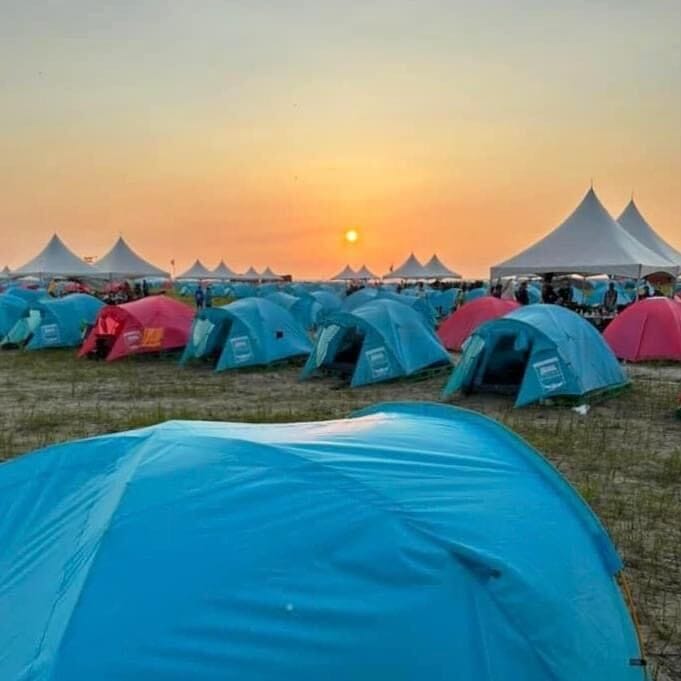
Let’s start with the end. The thousands of Scouts and volunteers from around the world had a transformative, safe, and memorable adventure. It wasn’t what we expected, but we made new friends, learned about Korean culture, and became more resilient in the process. Everyone made it home safely. Most participants had a wonderful time and left the Jamboree as global citizens who are better connected and committed to supporting the United Nations Sustainable Development Goals in their home countries. Mission accomplished.
But it wasn’t easy. If you’ve read the international news, you may have wondered, “Surely the media is exaggerating. How could it be so bad?” To be honest, most of the reports were accurate. Temperatures were above 35 degrees every day, feeling like 44 with the humidity. More than 8,500 Scouts were treated at the camp hospital for heat-related illnesses, bug bites, and other injuries – that’s 20% of the camp population.
The Jamboree Organizing Committee was not well prepared. The site, an 8 km2 reclaimed seabed, had serious drainage problems and offered no shade. Those who arrived after the first rain pitched their tents on plastic pallets in six inches of water. Roads were built to allow traffic on the site, but they were narrow. Truck and bus traffic endangered pedestrians everywhere. Plumbed drinking water was available at the campsites, but not when crossing the site or in the program areas. Construction of toilets and showers continued after thousands had already arrived. Food distribution was uneven, with some having nothing to eat 24 or more hours after arrival. Several large contingents decided to arrive a day or two later so that the organizing committee could catch up on its preparations.\
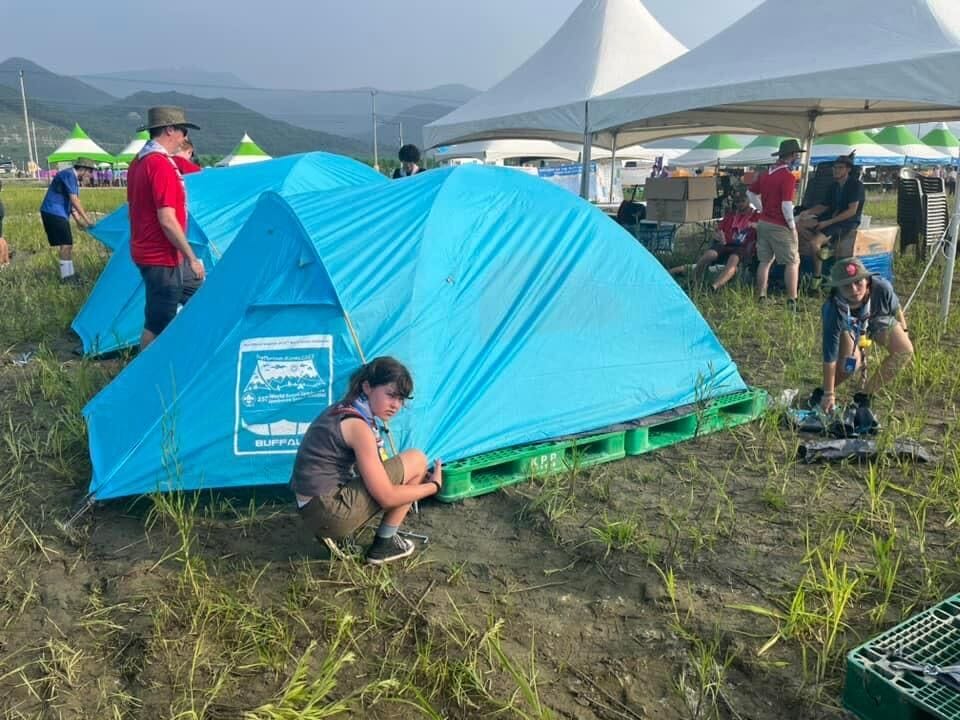
This lack of preparedness and responsiveness had a devastating effect on the leaders of the 170 contingents and the front line staff of the Jamboree. We had to make decisions about the welfare of the Scouts entrusted to our care, asking ourselves, “Is this a safe place for my Scouts? What if an emergency occurs? Is the organizing committee prepared to mobilize a safe evacuation? What if we leave? What if we stay?”. Embassies, national associations, heads of state, and even monarchs offered advice. Contingent leadership teams found themselves in an impossible position they should not have been put in. No matter what was decided, we would disappoint Scouts and parents.
After a few days, the government of the Republic of Korea took over from the organizing committee. It took a few days, but the food got better, the toilets were cleaned, toilet paper appeared, and there was drinking water everywhere. There was even soap at some sinks! Busses were brought in to give participants and staff an air-conditioned break. It was still hot, but now everyone had means to cope with the heat.
A lesson in perseverance and resilience
Through all of this, the Scouts persevered. They slowed down, drank water, participated in programs, and made friends. They were having the time of their lives. The leaders, however, were rightly concerned about safety, health, and emergency preparedness. Heads of contingents, staff and unit leaders didn’t see change coming fast enough. After a few days, the United States, the United Kingdom, and several other contingents announced they were leaving the site early due to health and safety concerns. The departing Scouts included several units from South Korea. These were gut-wrenching decisions for the contingent leaders to make. These Scouts had worked for years to get here, and now they had to leave after only a few days. It was devastating to see 4000 British Scouts leave for Seoul for the rest of the Jamboree.
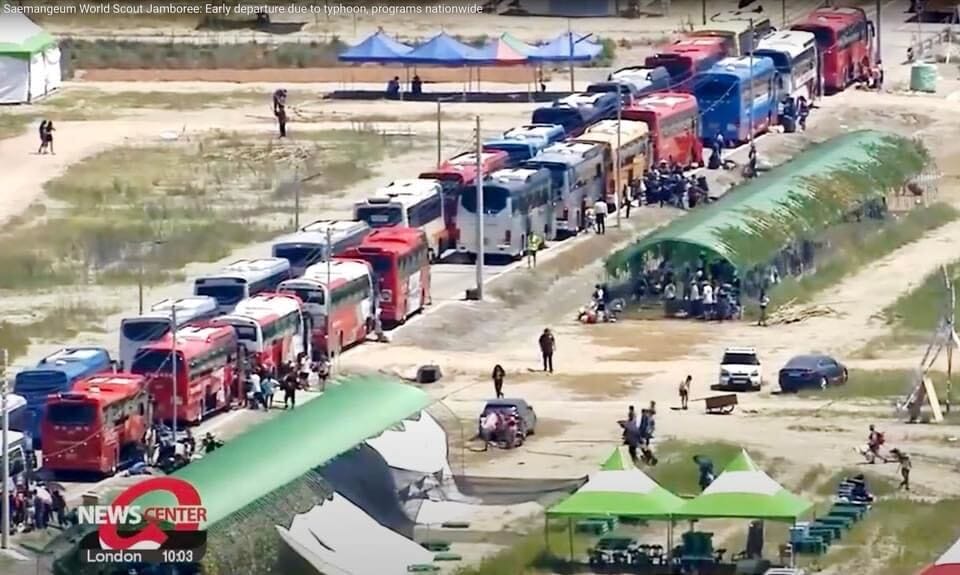
The forecast of a major typhoon changed everyone’s plans. Typhoon Khanun zigged and zagged, but it reached the Jamboree site, which was already prone to flooding and poor drainage. Overnight, the focus shifted from sanitation and food distribution to the early departure of the remaining 39,000 people on site. The government arranged to have 1,000 buses on site the next morning and set up more than 200 safe locations – ranging from university dorms to corporate training rooms – to house the Scouts and staff for the remainder of the jamboree. Within just 17 hours of the decision to evacuate, everyone had left the site.
For the next seven days, rain or shine, communities across South Korea hosted engaging programs for the Scouts. They learned how to code for robots at a research park, danced traditional Korean dances at a cultural centre, visited historical sites in Seoul and other cities, and ate delicious Korean food. They experienced the generosity of Korean hospitality in a way they never would have if they had stayed in Saemangeum. I was delighted to see Scouts connect with local Korean people and their hospitality.
Many of our Korean friends were ashamed of the national failure of the Jamboree. They shouldn’t be. Although there were serious preparedness issues, through the pivot they showed incredible determination, hospitality, friendliness, and graciousness through the transition. As a nation, they paused a lot to welcome the world and turn the experience around. When the right people make the right decisions, it makes all the difference.
On the final day, all the Scouts gathered at the Seoul World Cup Stadium for the closing ceremony and an amazing k-pop concert. The government again organized 1,000 buses to take the Scouts to the stadium and some of them to Incheon Airport after the concert. Others returned to their accommodations until it was their turn to go to the airport.

The jamboree challenged me and my fellow volunteers like no other event. Each day presented us with new challenges of the “you can’t make this stuff up” category. We were in crisis mode from day one, but we were able to pull it together to keep the Scouts safe and engaged. I learned a lot from that experience. The jamboree was not jeopardized by extreme weather or a typhoon, but because predictable and practical necessities were not taken care of: clean toilets, healthcare, adequate food, responsiveness, and communication. It was due to poor planning and the wrong people in charge of the organisation.
When the right people stepped up to the plate, I was inspired by their effort and collaboration. Their passion, focus, professionalism, talent and kindness turned the jamboree around for the better. This is a lesson I will keep with me as I continue to plan outdoor journeys for the youth Outward Bound Canada serves. Big adventures must come with attention to the small details. Careful team selection is the first and most important detail. It takes a variety of experiences, talent and knowledge, coupled with the awareness that one can’t do it alone. Invest in people, invest in training, be prepared for the small details and when things go wrong – and sometimes they do go wrong – ask for help.
So there you have it. How was the jamboree? Fantastic, memorable and challenging. Did I learn the importance of working with a team focused on risk management and positive outcomes? Definitely. Did the Scouts have a good time and learn resilience, goal setting and the value of a positive attitude? Absolutely. Would I do it again? Poland in 2027!”
 About the author:
About the author:
Sean Hume is the regional program manager for the Urban Wild program in Toronto. Previously, he was a teacher and principal before returning to his roots in outdoor education at OBC. He has volunteered with Scouts Canada since 1986, where he still loves to facilitate outdoor adventures both big and small.
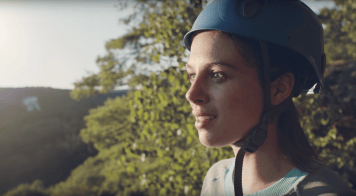
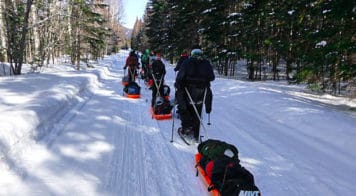
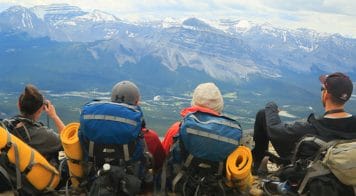


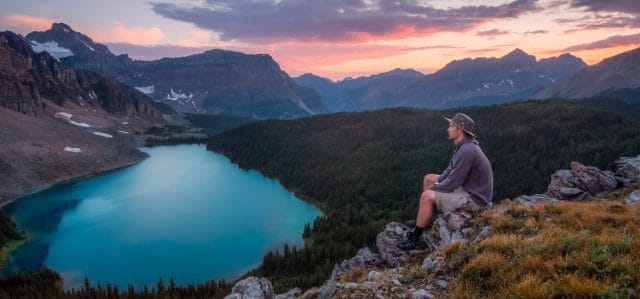

 About the author:
About the author: